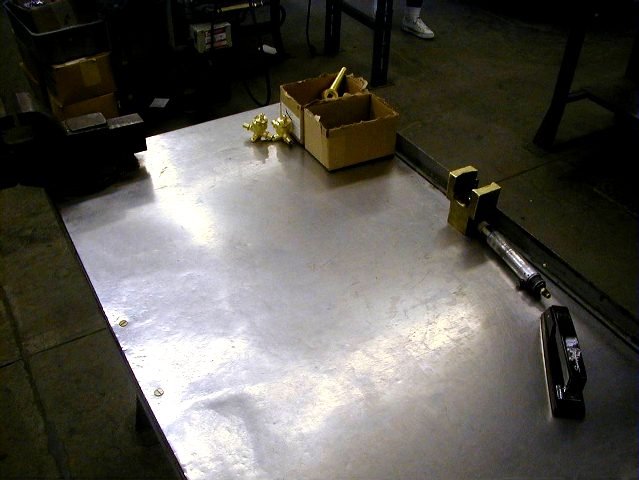 |
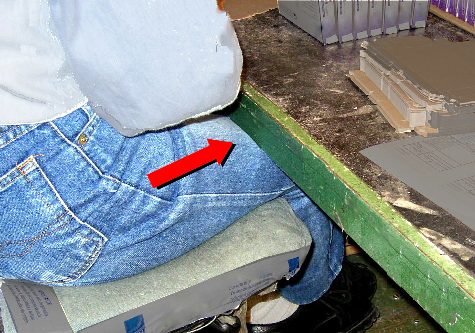 |
| Glare | Clearance |
Principles affected
- Posture
- Force
- Clearance
- Environment (lighting)
Related pages
Workstations
Material handling
Background
Depending on the task and the conditions in the area, the workstation surface can interfere with effective work:
- Shiny surfaces can create glare, which can interfere with visual needs.
- Some surfaces can create too high friction for materials that need to be slid. Conversely, other surfaces can be too slippery for items that need to be held securely in place.
- The surface itself can be too thick and interfere with proper clearance for the thighs.
Objectives
Use materials that are appropriate for the task and the conditions in the area.
Ideas and Options
Matte surface
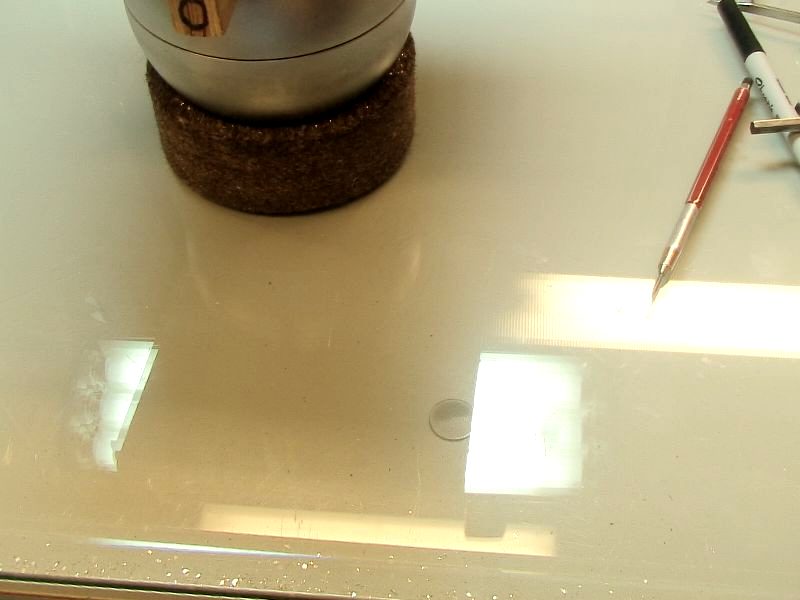 |
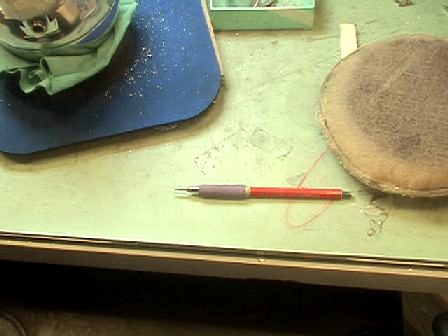 |
| Before: Glare from overhead lights on reflective surface | After: Thin sheet of soft plastic material as cover |
Some standard surfaces are too reflective for the tasks that are performed, especially visually intense work. Any number of matte materials can be added as a cover to eliminate the glare.
Low friction
| Slippery plastic to help slide items |
It is often helpful to slide loads. For many items, it is helpful to add a slippery surface, such as polypropylene or other similar plastic. (See slides.)
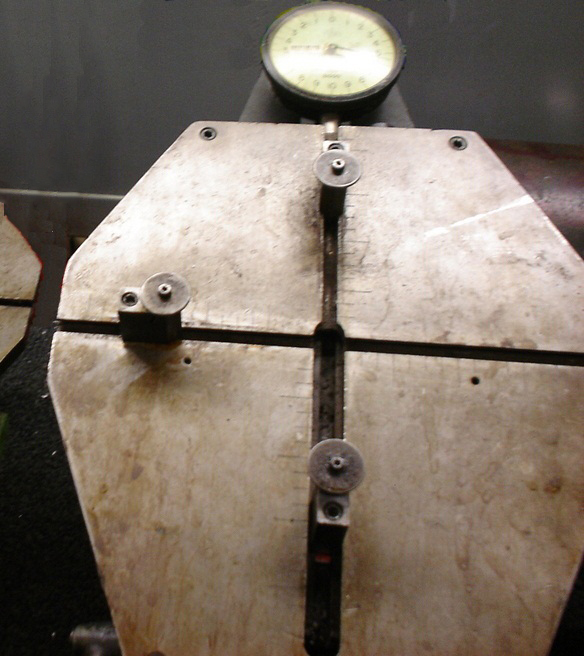 |
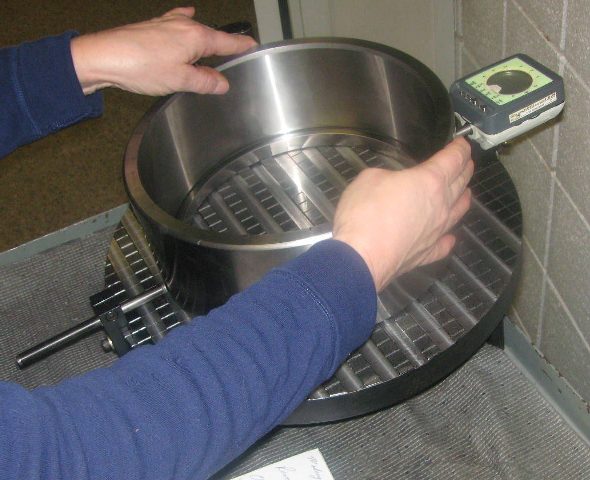 |
| Before: Flat surface | After: Grooved surface |
Cutting groves into a flat surface is another way to reduce friction and the “vacuum” effect that can be created when sliding. The specific example above is a surface gauging plate, but the concept can be applied in other situations. Gauging the edge of the circular part requires the employee to slide the heavy part around. Using a grooved plate instead reduced the force.
High friction
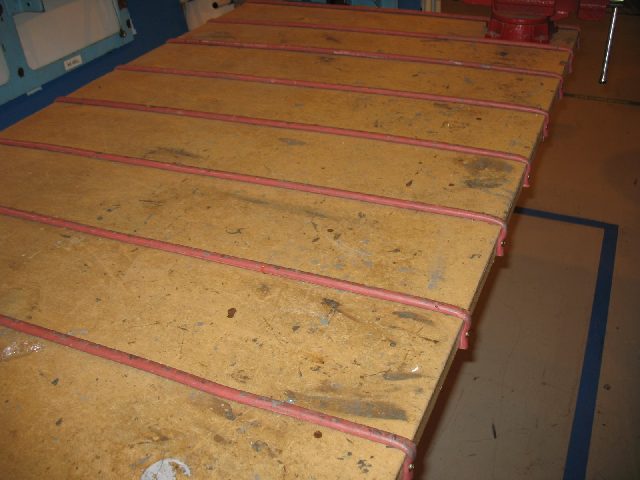 |
| Rubber straps wrapped around workstation surface for large product |
Occasionally, extra friction can help hold items in place. Fixtures can be used, but sometimes all that is needed is a stickier surface. This technique is especially helpful for large items that are too big to fixture, but not heavy enough to stay in place with a standard surface.
Special
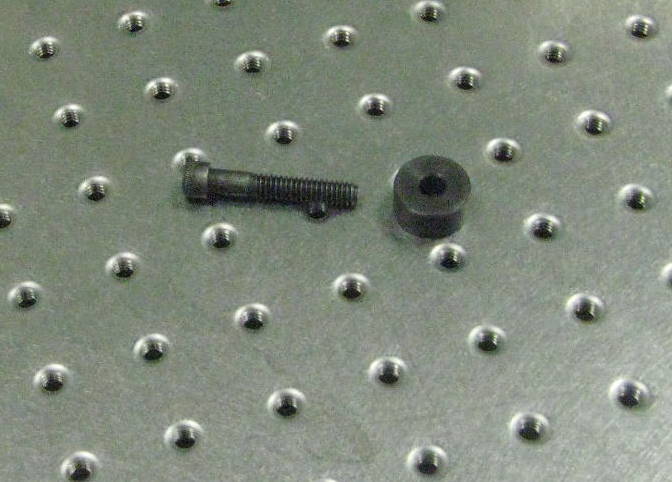 |
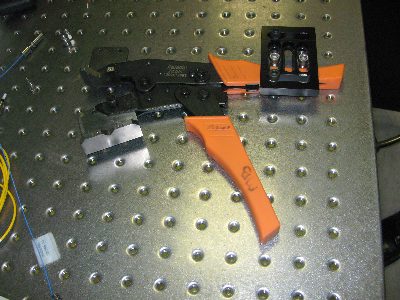 |
| Multiple screw holes tapped into surface | Tools and holders can be attached as needed |
This surface is unusual, but practical for rapid changeover to different configurations of many types of holders and tools that need to be secured. (Again, see fixtures)
Thickness
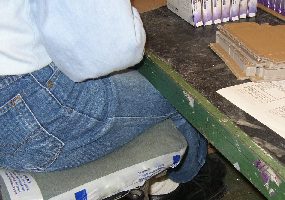 |
| Thick surface constricts leg |
Some surfaces are too thick for adequate seated work. This issue is especially common with older workbenches — newer ones tend to be thinner for this reason. Of course, some workstations need to thick to support the weight of equipment, but even then, it can be possible to use alternative designs that provide both stability and a thinner dimension. (See workstation clearance)
